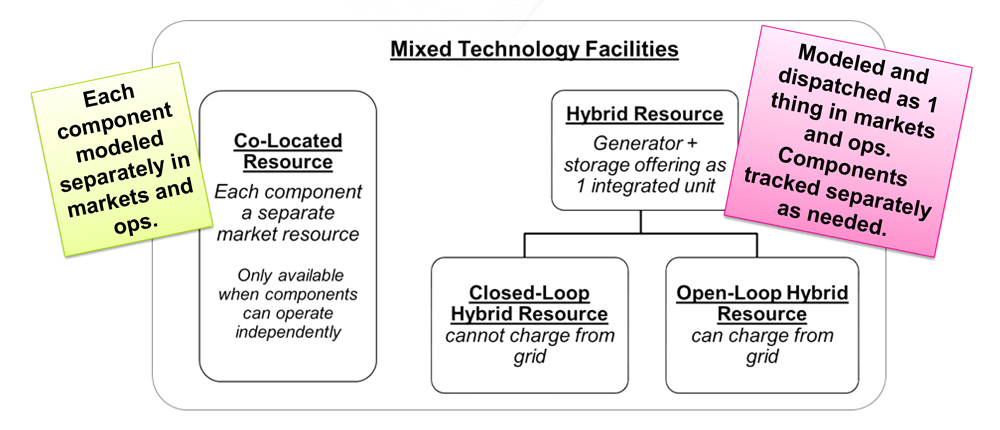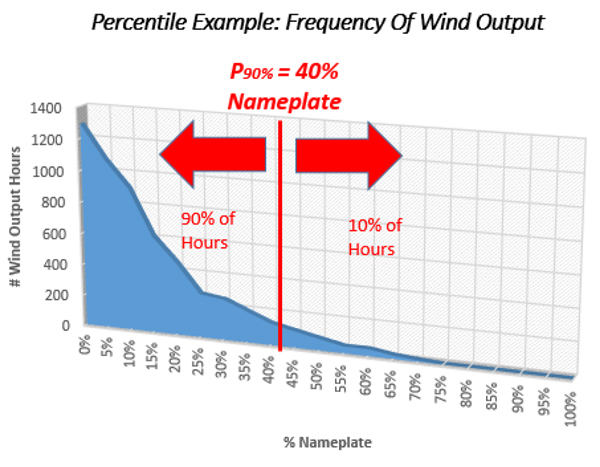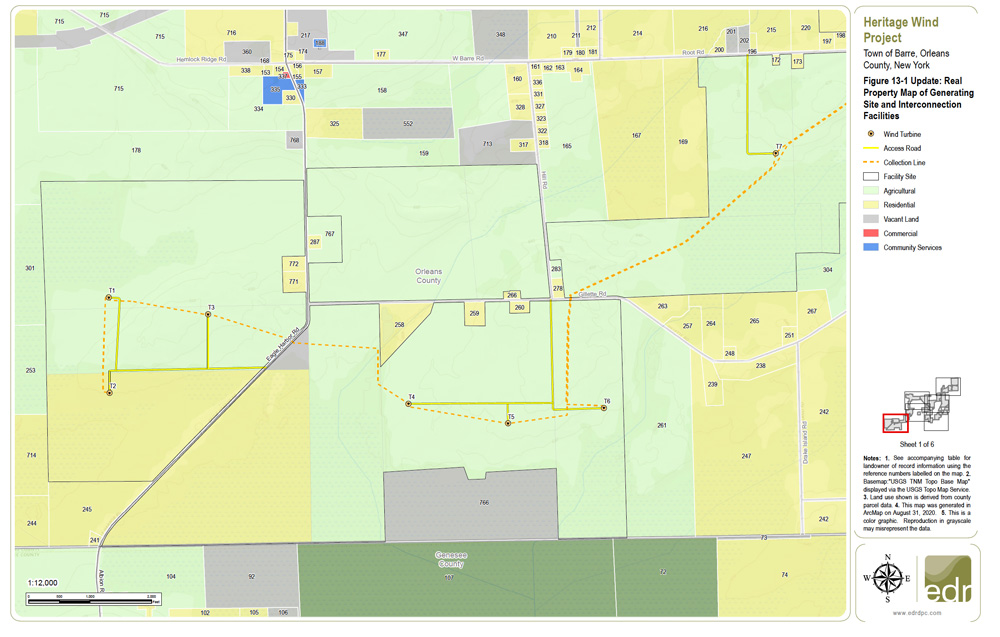Stakeholders last week welcomed proposed changes to PJM’s interconnection procedures as long overdue but challenged the RTO’s timeline and transition plans.
PJM last month proposed to switch from a “first-come, first-served” approach to a “first-ready, first-served” cycle, with individual serial studies replaced with cluster studies (ER22-2110). (See PJM Files Interconnection Proposal with FERC.)
More than 30 companies and groups filed comments by the July 14 deadline in response to the RTO’s proposal, the result of 18 months of stakeholder talks.
The American Council on Renewable Energy said that while PJM’s proposal “does not address the full range of needed interconnection reforms, the reforms proposed are an important first step and will likely mitigate several causes of queue backlogs.”
The Organization of PJM States Inc. (OPSI) urged FERC to approval the proposal promptly but complained that PJM’s proposed four-year transition and two-year default processing timelines are too long. It noted that 11 of the 14 jurisdictions in PJM have renewable portfolio standards, but they rely heavily on imports for compliance because of insufficient renewable generation within their borders.
“Despite the fact that interconnecting new generation is a critical component of open-access transmission service and should be one of PJM’s core competencies, PJM’s generator interconnection queue has been inefficiently processing interconnection requests,” OPSI said. “PJM has been aware of state public policy goals for a number of years, but PJM continues to make little progress with the queue backlog. As a result, the current queue delays put some states in jeopardy of not meeting their near-term public policy goals as target dates inch ever closer.”
It said PJM reported completing only 13 facilities studies in April and May, versus a backlog of 1,585. “This slow pace will not clear the backlog and illustrates the urgent need to immediately reform the broken interconnection process,” the group said, adding that it will look to FERC’s interconnection Notice of Proposed Rulemaking (RM22-14) for additional improvements. (See FERC Proposes Interconnection Process Overhaul.)
OPSI said PJM’s proposals are similar to changes approved in other RTOs and proposed in FERC’s rulemaking. “However, the length of the proposed process does not live up to the standards set by other RTOs,” it said.
“OPSI is deeply concerned that, even under PJM’s proposed reforms, a project entering the queue today may not be able to achieve commercial operation until nearly 2030. This is because PJM proposes to not process any new interconnection applications until as late as 2026, at which point projects would then have to undergo a two-year interconnection process. The prospect of such a lengthy timeline is troubling. It is important that PJM’s proposed four-year pause on reviewing new applications be an absolute upper limit and that PJM invest the time and resources to substantially reduce this transition period.”
$5 Million Threshold Challenged
Numerous stakeholders also criticized the RTO’s transition plan to bar projects from remaining in the serial process “fast lane” — rather than starting over in a transition cluster study — if it contributes to the need for a network upgrade that exceeds $5 million.
“PJM has not demonstrated that this threshold has any correlation to whether a project in the queue is commercially ready,” the PJM Power Providers Group said. “Instead, this arbitrary threshold will upend many projects that are fully permitted, have made significant investments based on the study results to date and are ready to move forward with construction and interconnection. … While a transition mechanism is needed to get to PJM’s new proposed interconnection process, one that is based on actual demonstrations of commercial readiness would be far superior and less disruptive than what PJM has proposed.”
Hecate Energy also challenged the $5 million cutoff saying FERC should “allow ‘ready to go’ projects (that are willing to post security and meet certain other milestones) to participate in the ‘expedited process’ during the transition, and to receive accelerated treatment after the transition, regardless of the cost of identified network upgrades.”
Hecate also joined in a separate protest with six other developers, including Acciona Energy and Leeward Renewable Energy in challenging the threshold. “The PJM stakeholder process was selective, controlled by PJM, overlooked key proposals to address PJM’s backlogged queue and cannot be relied upon as justification for PJM’s queue reform filing,” they said.
Competitive Power Ventures said “the proposal ignores late‐stage projects … that have made substantial strides in development and can prove their readiness in objective and substantial ways, and that may have been delayed only as a result of PJM study delays. Such projects will be catapulted back in time, erasing all of the study work completed and proceeding under a completely new paradigm, while a project that may be later in the queue and may not be as far along in their development progress can leap frog over them simply because their projected network upgrade costs are $5 million or less.”
But Pine Gate Renewables and Cypress Creek Renewables insisted in a joint filing that the $5 million threshold is “rooted in PJM’s current tariff provisions, which establish $5 million as the minimum threshold for inter-queue cost allocation. Moreover, it is a carefully negotiated term that active PJM stakeholders debated extensively.”
“PJM stakeholders and staff collectively and collaboratively developed and adopted the eligibility criteria and $5 million threshold to facilitate PJM’s clearing of the existing backlog, while also allowing mature projects with little or no network upgrade responsibility to complete the interconnection process in a timely manner,” they said.
The two companies asked FERC to approve the filing quickly, saying it was the result of “a robust, inclusive and consensus-driven stakeholder process.”
‘Awkward Position’
The Sierra Club, Natural Resources Defense Council and the Sustainable FERC Project said that PJM’s filing restates existing tariff provisions that may be unjust and unreasonable under FERC’s interconnection NOPR, including the lack of firm deadlines for its transition cycles and new rules.
“This puts FERC in the awkward position of being asked to rule that a Section 205 filing is just and reasonable at the same time it investigates if portions of that filing are unjust or unreasonable through a rulemaking,” the groups said. “It is essential that FERC action in this docket does not prejudice the outcomes of the interconnection NOPR.”
They also asked FERC to reduce PJM’s proposed requirement that project developers provide proof of 100% site control to 90% and to add language “allowing flexibility when site control cannot be demonstrated because of regulatory requirements or obligations.”
Uncertainty
The Solar Energy Industries Association called the proposal a “significant improvement” that “ensures efficient processing of interconnection requests that will allow lower-cost resources to come online faster.”
But it said the proposed four-year delay in reviewing new applications will “create uncertainty for potential development in PJM once PJM begins reviewing new applications, as some developers will shift their efforts to other regions.”
It said FERC should require PJM to submit biannual reports on its progress in reducing its queue backlog and a breakdown of the interconnection delays by transmission zone, to determine whether individual transmission owners are to blame.
For their part, PJM’s TOs said in a joint filing that they “fully recognize that this reform is just an initial step that provides a flexible framework capable of accommodating future changes spurred by either PJM stakeholders or commission action.” They noted that PJM stakeholders intend to consider additional improvements through the new Interconnection Planning Subcommittee reporting to the Planning Committee.
Also filing a protest was the developer of the proposed 2,100-MW SOO Green HVDC Link ProjectCo, which said the proposal is unfair to merchant transmission facilities, “which are unjustly included in the new services queue and will be forced into even longer interconnection delays.”
Queue Groupings
National Grid Renewables Development, NextEra Energy Resources and RWE Renewables Americas said FERC should reject PJM’s proposal to include projects in queue groupings AG2 (cutoff date March 31, 2021) and AH1 (Sept. 30, 2021) in the transition along with projects in group AG1 (Sept. 30, 2020).
PJM’s initial transition proposal, presented to stakeholders in November 2021, included only group AG1.
“This decision respected projects that had some study work done and were thus entitled to rely on a continuation of the process they had embarked upon,” the companies said. By contrast, “most, if not all, AG2 and AH1 projects entered the queue knowing or on notice that PJM had already began with its stakeholders an initiative to make sweeping changes to its queue rules.”
PJM agreed to include AG2 and AH1 in the transition following lobbying by stakeholders holding positions in those groups, the three companies said.
The companies said including AG2 and AH1 would add 1,358 projects. Based on prior queues, only about 40 (3%) of those projects will be completed, they said.
‘Adjacent’ Parcels
Tenaska protested as arbitrary PJM’s proposal to allow a project developer to make changes to the project site at its first two decision points as long as the new site and the initial site are “adjacent parcels.” The company said PJM did not define “adjacent parcels” and provided no rationale for the requirement.
“A showing of ‘adjacency’ for a proposed site change is unnecessary for PJM in performing its function — assessing and studying a new project’s impact on the network transmission system — if the proposed site change does not result in a material modification,” it said.
Tenaska said solar project developers often file for a queue position after obtaining site control over a parcel of land but before conducting soil and geotech studies that could detect high levels of mercury or other elements that make the parcel undesirable. “Project developers then find nearby parcels of land, free from such environmental issues, and ‘perfect’ the site accordingly,” Tenaska said. “While these parcels sometimes are adjoining, sometimes they are nearby but not directly adjoining.”
The PJM study process examines the effect of new generation at a given point of interconnection to evaluate the effect of additional generation on reliability. “The real property status of the ground on which a project will be sited is wholly irrelevant to that analysis,” Tenaska said.
The company said site control requirements are intended to prevent speculative proposals from entering the queue.
Thus, it said, PJM should allow developers to change their sites unless they cause “a material adverse effect on the cost or timing” of interconnection studies related to system upgrades, “consistent with” the policies in MISO and SPP.


